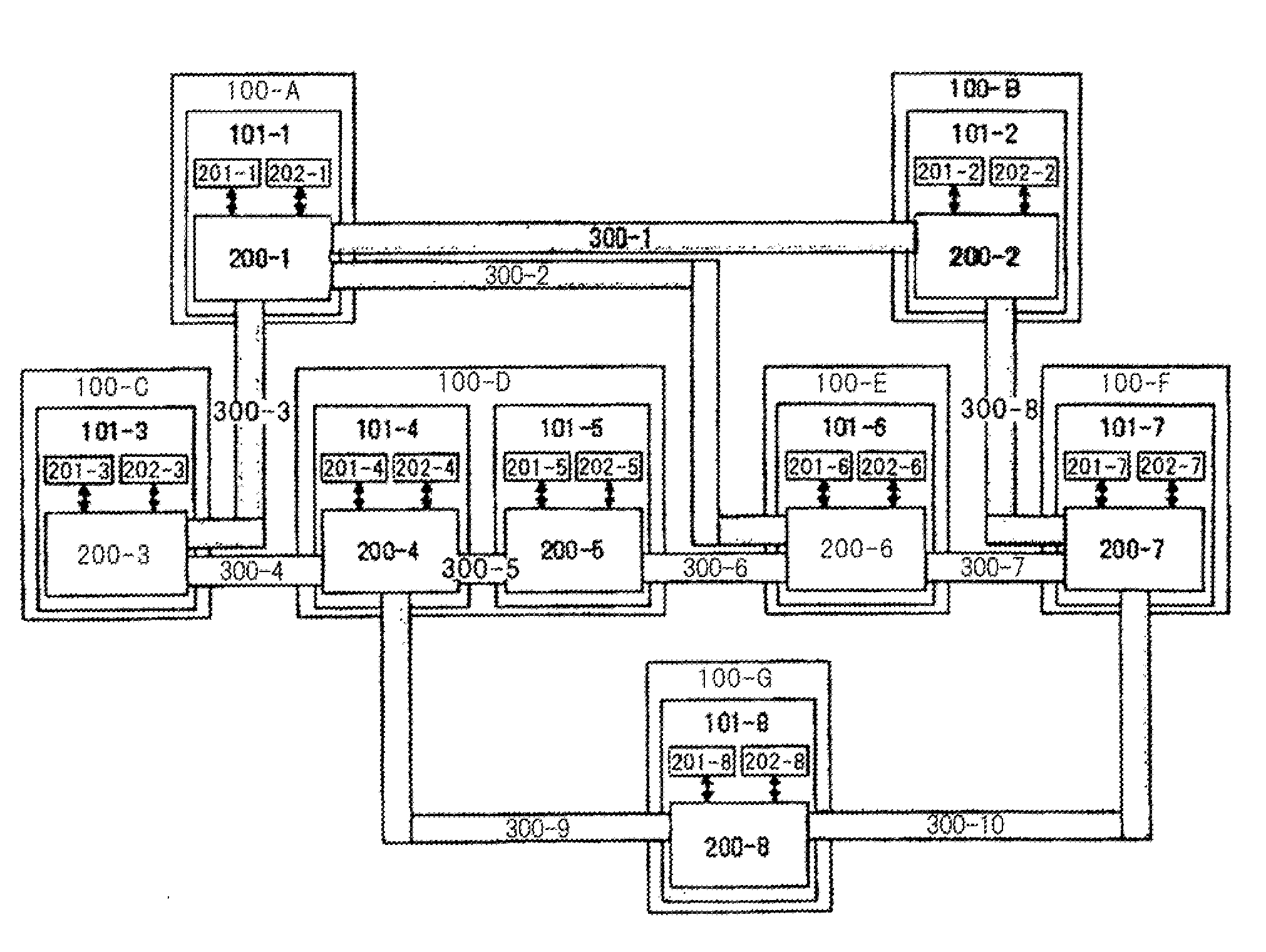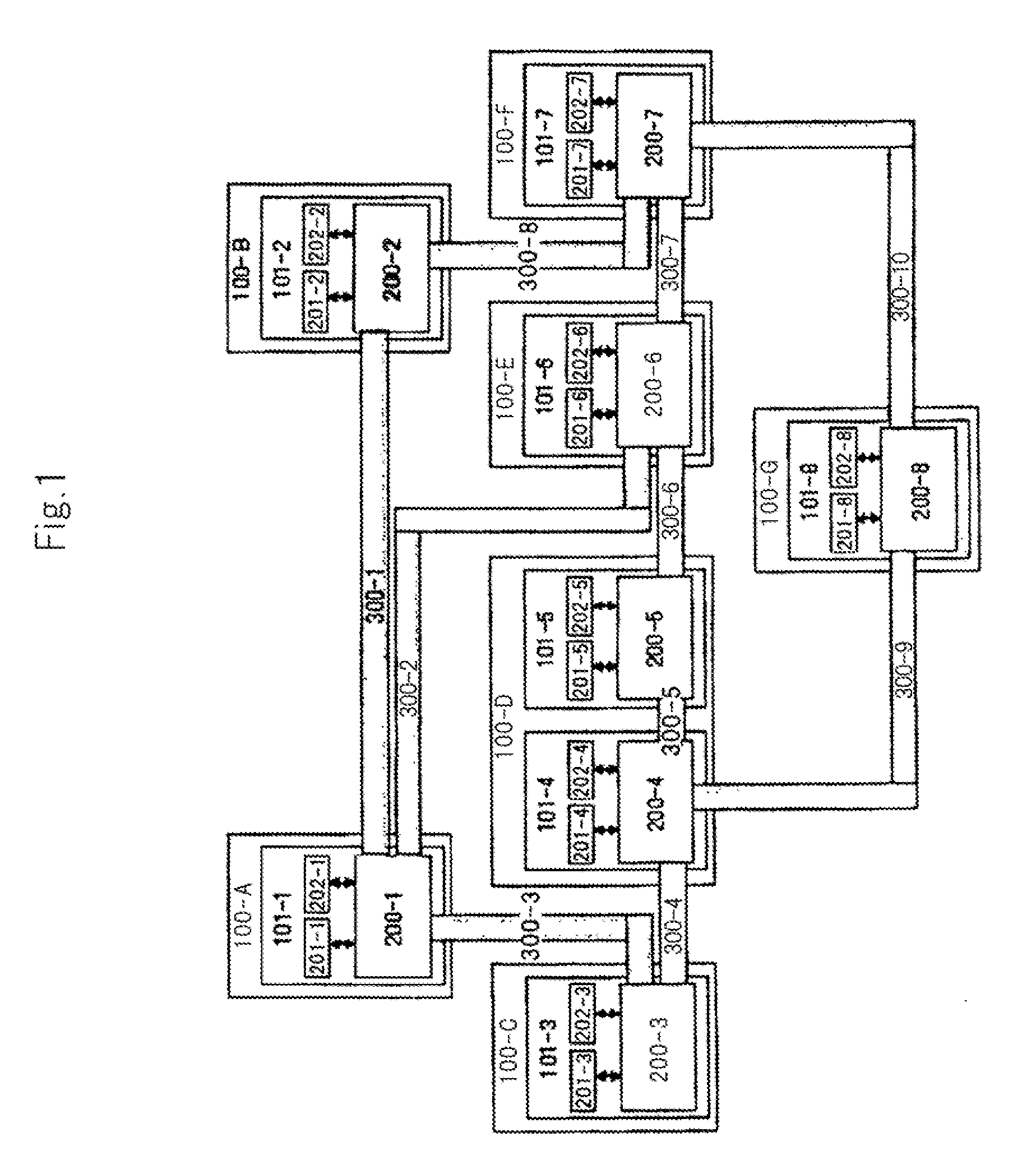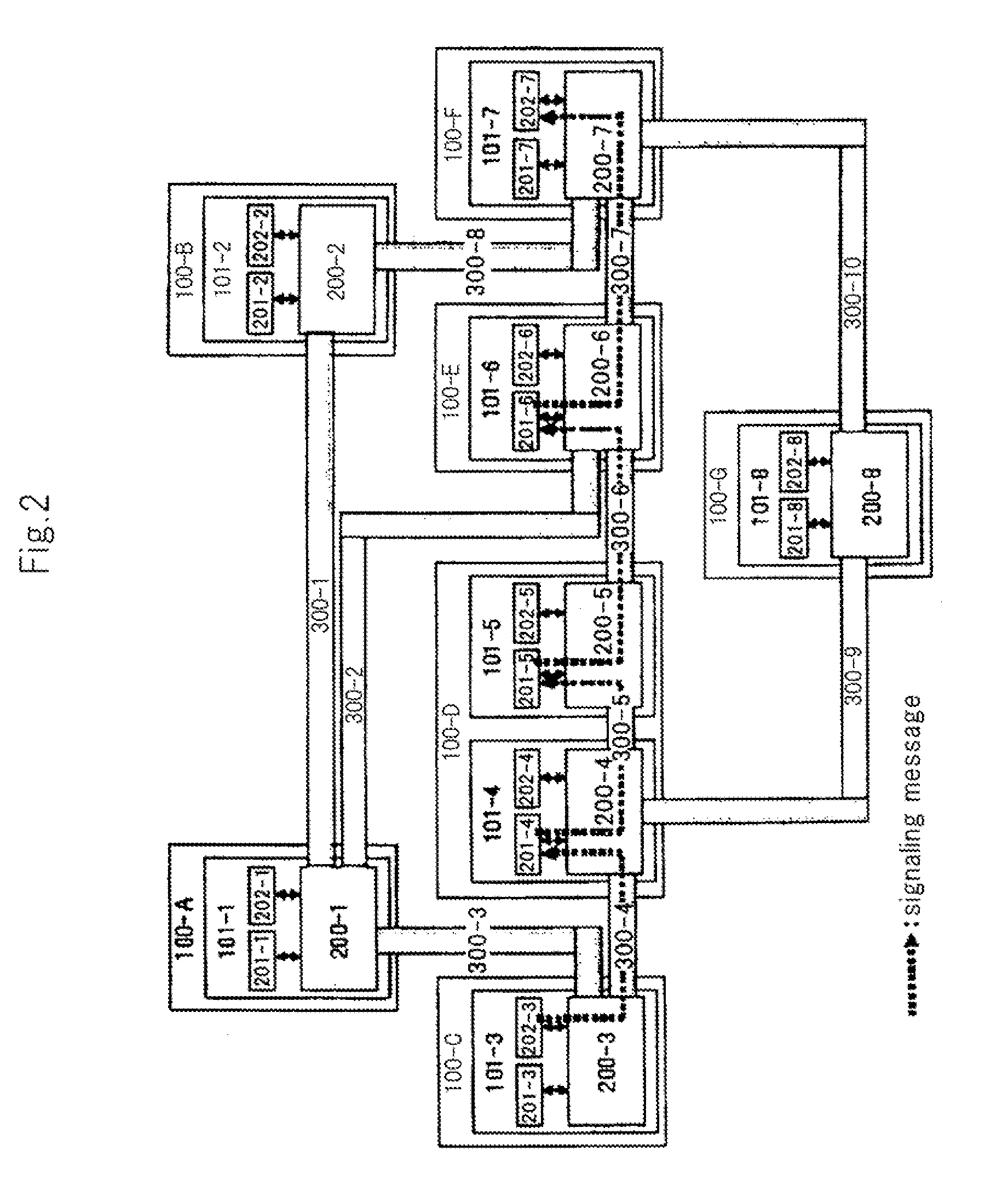Distributed resource managing system, distributed resource managing method, and distributed resource managing program
a resource management system and resource management technology, applied in the field of distributed resource management system, distributed resource management method, distributed resource management program, can solve the problems of information being likely to put pressure on the band and processing capability, high resource cost, and vulnerability of network management function, so as to reduce the concentration of temporal and spatial load, and reduce the traffic and processing load
- Summary
- Abstract
- Description
- Claims
- Application Information
AI Technical Summary
Benefits of technology
Problems solved by technology
Method used
Image
Examples
first exemplary embodiment
[0059]First, a distributed resource managing system according to a first exemplary embodiment of the present invention will be described below.
[0060]FIG. 1 shows a configurational example of the distributed resource managing system according to the first exemplary embodiment of the present invention.
[0061]In FIG. 1, 100-A, 100-B, . . . , 100G denote centers such as office buildings and data centers, and 101-1, 101-2, . . . , 101-8 node apparatus (hereinafter referred to as “nodes”).
[0062]Each node includes exchange 200, resource managing process 201, and communication task managing process 202. It is assumed that each communication task can be carried out insofar as a transfer band from a source node to a destination node is maintained. On a communication network as shown in FIG. 1 where a plurality of tasks can use a plurality of resources, respectively, one or more resource managing processes 201 correspond to each of the events that change the states of the resources which have b...
second exemplary embodiment
[0096]A distributed resource managing system according to a second exemplary embodiment of the present invention will be described below.
[0097]It is assumed that a communication task according to the above exemplary embodiment can be carried out if the transfer band from a source to a destination is maintained. The present invention is also applicable to a task which needs to reserve a resource other than the transfer band. FIG. 11 shows a configurational example according to the second exemplary embodiment and a route for transferring a signaling message.
[0098]As shown in FIG. 11, some nodes 101-x include data processors 400-x. Some tasks according to the present exemplary embodiment can be carried out when the transfer band from a source to a destination and a data processing throughput are maintained. Data processing is assumed to be data encryption or codec conversion of video and audio data. These processes accompany the consumption of the throughput of the data processors, and...
PUM
 Login to View More
Login to View More Abstract
Description
Claims
Application Information
 Login to View More
Login to View More - R&D
- Intellectual Property
- Life Sciences
- Materials
- Tech Scout
- Unparalleled Data Quality
- Higher Quality Content
- 60% Fewer Hallucinations
Browse by: Latest US Patents, China's latest patents, Technical Efficacy Thesaurus, Application Domain, Technology Topic, Popular Technical Reports.
© 2025 PatSnap. All rights reserved.Legal|Privacy policy|Modern Slavery Act Transparency Statement|Sitemap|About US| Contact US: help@patsnap.com



